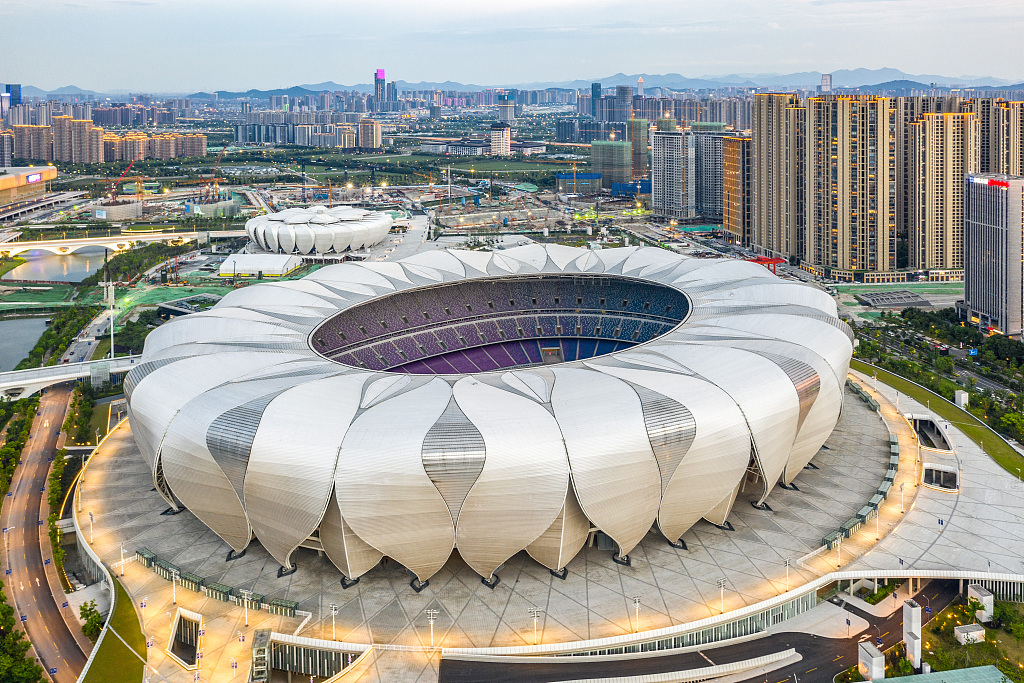Reviving City Centers: The Role Of Sports Stadiums

Table of Contents
The Economic Engine: How Stadiums Boost Local Economies
Sports stadiums are not just venues for games; they are powerful economic engines capable of injecting significant vitality into surrounding areas. Their positive economic impact stems from multiple sources.
Increased Revenue Streams
The construction and operation of a sports stadium generate substantial revenue streams for local governments and businesses.
- Tax Revenue: Stadium construction and subsequent events generate significant tax revenue through construction permits, ticket sales, and other related activities. This revenue can be reinvested in essential city services and infrastructure improvements.
- Job Creation: From construction workers and hospitality staff to retail employees and event managers, stadiums create a vast number of jobs, boosting local employment rates and stimulating economic activity. The ripple effect extends to supporting businesses and industries.
- Increased Property Values: Properties in the vicinity of a successful stadium often experience a significant increase in value, benefiting homeowners and attracting further investment in the area. This effect is particularly noticeable in previously underdeveloped or underutilized areas.
- Examples: The development of the Mercedes-Benz Stadium in Atlanta significantly boosted local economic activity, leading to increased tourism, job creation, and property value appreciation. Similarly, the regeneration of London's Docklands around the Olympic Stadium showcases the potential for transformative economic impact.
Attracting Investment and Development
A well-planned stadium project acts as a magnet for private investment, driving the creation of supporting infrastructure and mixed-use developments.
- Private Investment: The presence of a major sports stadium attracts private investment in surrounding areas, leading to the development of hotels, restaurants, entertainment venues, and residential properties. This creates a vibrant and dynamic environment around the stadium.
- Mixed-Use Developments: Successful stadium projects often incorporate mixed-use developments integrating residential, commercial, and recreational spaces. These developments create a lively, self-sustaining community that extends beyond the stadium's immediate vicinity.
- Examples: The revitalization of areas surrounding the new Yankee Stadium in New York City provides a prime example of how a stadium can catalyze broader urban development, attracting considerable private investment and improving the overall neighborhood.
Social Hubs and Community Building: The Social Impact of Stadiums
Beyond their economic contributions, stadiums serve as vital social hubs, fostering community pride, identity, and social cohesion.
Fostering Community Pride and Identity
Sports teams and their stadiums become powerful symbols of community pride and shared identity, bringing people together from all walks of life.
- Shared Identity: Local sports teams unite communities, providing a shared sense of belonging and fostering a collective identity. This is particularly important in diverse urban environments.
- Community Events: Stadiums often host community events, festivals, concerts, and other gatherings, creating opportunities for social interaction and strengthening community bonds. These events help to build a strong sense of place and collective experience.
- Social Inclusion: Well-designed stadiums and surrounding areas can promote social inclusion by creating accessible spaces that welcome people from diverse backgrounds and abilities.
- Examples: Many cities utilize their stadiums to host community events like food drives, charity games, and holiday celebrations, effectively linking the stadium to wider community initiatives.
Enhancing Accessibility and Public Spaces
The development of a stadium can often lead to significant improvements in public transportation, pedestrian access, and the creation of new public spaces.
- Improved Infrastructure: Stadiums often require and stimulate investment in improved public transportation systems, making it easier for people to reach the stadium and the surrounding area.
- Public Parks and Green Spaces: Innovative stadium designs incorporate public parks and green spaces, enriching the surrounding environment and providing recreational opportunities for residents.
- Accessibility: Modern stadiums prioritize accessibility for people with disabilities, ensuring that everyone can enjoy the facilities and events.
- Examples: Many newer stadiums feature designs that integrate public green spaces, creating welcoming community areas beyond the confines of the stadium itself.
Urban Planning and Stadium Integration: Designing for Success
The successful integration of a sports stadium into a city center requires careful urban planning that considers various factors.
Strategic Location and Infrastructure
The choice of location for a stadium is crucial for maximizing its positive impact on the surrounding area.
- Appropriate Location: Selecting an appropriate location for a stadium involves careful consideration of factors such as accessibility, proximity to existing infrastructure, and potential impact on the surrounding neighborhood.
- Transportation and Parking: Adequate public transportation and parking infrastructure are essential to minimize traffic congestion and ensure easy access to the stadium for visitors and residents.
- Integration with Urban Fabric: The stadium should be designed to integrate seamlessly with the existing urban fabric, respecting the character of the neighborhood and enhancing its overall aesthetic appeal.
- Examples: Cities that have successfully integrated stadiums often demonstrate a thoughtful approach to location, transportation, and integration with the broader urban landscape.
Sustainability and Environmental Considerations
Modern stadium designs place increasing emphasis on sustainability and environmental responsibility.
- Sustainable Design: Incorporating sustainable design principles in stadium construction is crucial for minimizing environmental impact. This includes using eco-friendly materials and reducing energy consumption.
- Renewable Energy: Many new stadiums are incorporating renewable energy sources, such as solar panels, to reduce their carbon footprint.
- Minimizing Environmental Impact: Sustainable stadium operations involve efficient waste management, water conservation, and minimizing noise and light pollution.
- Examples: Several leading stadiums demonstrate commitment to sustainable design and operation, showcasing environmentally friendly practices.
Conclusion: Reviving City Centers Through Strategic Stadium Development
Strategic sports stadium development can play a significant role in reviving city centers, delivering substantial economic, social, and urban planning benefits. Successful projects require a holistic approach, carefully balancing economic development, social inclusion, and environmental responsibility. By prioritizing community needs, long-term sustainability, and thoughtful urban design, cities can harness the powerful potential of sports stadiums to create vibrant, thriving, and inclusive urban environments. We encourage you to learn more about successful city center revitalization projects involving sports stadiums and to advocate for responsible stadium development in your own communities – let’s work together to revive city centers through innovative and sustainable solutions.

Featured Posts
-
 Key Facts About Debbie Elliott
May 11, 2025
Key Facts About Debbie Elliott
May 11, 2025 -
 2025 New York Yankees Merchandise Your Guide To Hats Jerseys And More
May 11, 2025
2025 New York Yankees Merchandise Your Guide To Hats Jerseys And More
May 11, 2025 -
 Declaraciones Del Piloto Argentino De F1 Generan Controversia Es Provincia Nuestra
May 11, 2025
Declaraciones Del Piloto Argentino De F1 Generan Controversia Es Provincia Nuestra
May 11, 2025 -
 Conor Mc Gregors Rare Photo With Adam Sandler A Happy Gilmore Shoutout
May 11, 2025
Conor Mc Gregors Rare Photo With Adam Sandler A Happy Gilmore Shoutout
May 11, 2025 -
 L Heritage De Jose Aldo Adaptation Et Inspiration
May 11, 2025
L Heritage De Jose Aldo Adaptation Et Inspiration
May 11, 2025
